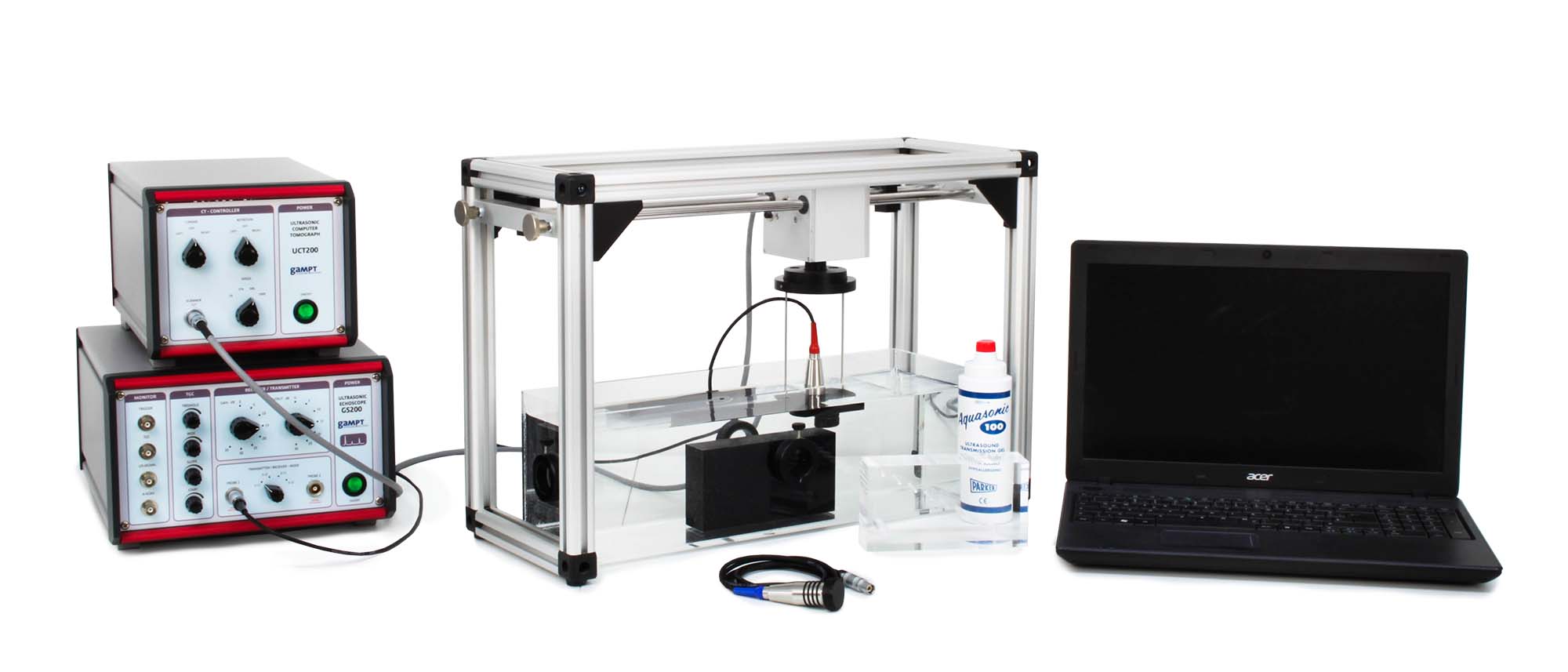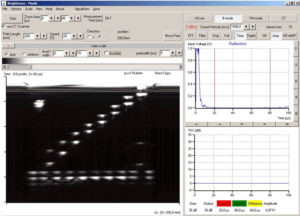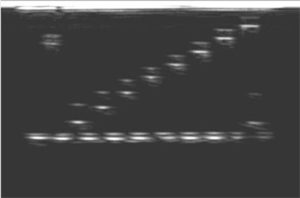Article No. VK-PHY16
PHY16 Mechanical Scan Methods
Recording of ultrasonic B-scan images of a simple test object with two ultrasonic probes of different frequencies using a computer controlled scanner
A computer-controlled scanner is used to record ultrasonic B-Scan images of a simple sample with two ultrasonic probes of different frequencies. The image quality of the B-Scan presentations is analysed regarding focus zone, resolution power and possible artefacts.
Keywords: Ultrasonic echography, pulse echo method, A-Scan, B-Scan, resolution power, mechanical scanning, image artefacts
To obtain a B-Scan image with an ultrasonic transducer it is necessary to shift it and/or the sound beam along the desired line for the cross-sectional image. Compared with the hand-guided approach to scanning, mechanical and electronic scanning methods offer better image quality due to a good resolution power and a freely selectable line density. Due to the low imaging frequency, however, electronic multi-element scanners are used for real-time images and moving structures. Due to the use of ultrasonic probes of different frequency in combination with mechanically guided uniform scanning, both the axial and the lateral frequency-dependent resolution power can be examined and rated in the experiment.
The illustration shows the B-Scan presentation of an acrylic block with drilled holes of different size and arrangement, recorded with a 2 MHz probe. By an investigation in the water bath, where the drilled holes are filled with water, echoes from both the upper edge and bottom edge of the drilled holes can be recognised. In the bottom echo, one can see the sound shadows of the holes located above.
| Ord.no. | Description |
|---|---|
| 10400 | Ultrasonic echoscope GS200 |
| 10151 | Ultrasonic probe 1 MHz |
| 10152 | Ultrasonic probe 2 MHz |
| 10201 | Test block (transparent) |
| 10204 | – optional: Test block (black) |
| 60100 | CT scanner |
| 60110 | CT control unit |
| 60120 | CT reservoir |
| 70200 | Ultrasonic gel |


